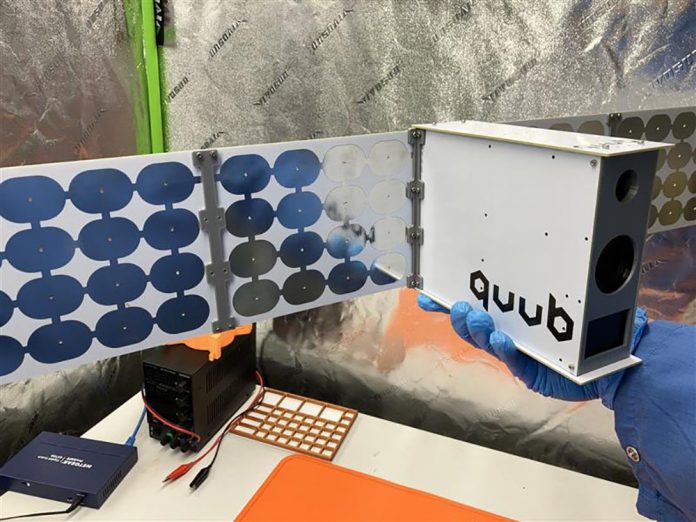Seven water companies are collaborating on a unique satellite project that could transform how water leaks are detected across the UK.
The Space Eye venture, led by South Staffordshire Water and the University of Wolverhampton, includes partnerships with SES Water, Northumbrian Water, Welsh Water, South East Water, Scottish Water and United Utilities, plus satellite experts Quub.
Their project recently won £1.3m in funding from Ofwat’s Innovation Fund to build, launch and operate a fleet of six Low Earth Orbit (LEO) micro satellites, aimed at detecting water leakage and unaccounted-for water with unprecedented efficiency and precision. Partners will contribute a further 10% in funding, taking the total to £1.46m.
With over 350,000km of water pipes in England and Wales serving more than 26 million properties, an estimated 1% of water supply is lost before it reaches consumers.1
This results in significant financial and environmental costs, amounting to £3.2 billion annually across the utilities sector – including £697 million from residential leaks alone.
Traditional detection methods, such as acoustic monitoring and tracer gas detection, remain labour-intensive and inefficient. These approaches typically locate fewer than one leak per day per crew and cost between £250 and £2,000 per inspection.
While other satellite-based technologies have improved detection rates, their high operational costs and image refresh rates of 7–14 days limit their effectiveness.
The Space Eye project aims to make use of satellite technology and space science to provide updated satellite imagery every few hours, covering the entire UK water pipe network.
This will allow water companies, through machine-learning algorithms combined with data science, to explore a myriad of opportunities, including quickly locating leaks and water wastage.
The collaboration brings together satellite technology, data science, knowledge sharing and leakage research experts to build, test and launch the new technology.
According to the research team from the University of Wolverhampton, the proposed solution – using the QUUB satellite platform – has several advantages:
High-frequency imaging, delivering fresh data every 6 hours for faster response.
2-5 metre per pixel resolution, offering the detail needed for pinpointing leaks.
AI-powered detection, enhancing accuracy through machine learning algorithms.
Significant cost savings, with detection costs projected to be at least 10 times lower than current satellite-based methods.
Global scalability, allowing rapid deployment beyond the UK and reinforcing the country’s position as a leader in intelligent water infrastructure management.
Elena Karpathakis, Managing Director, South Staffordshire Water, said: “Innovation is at the heart of our culture as a business, helping us to create lasting and positive impact for our customers, the wider communities we serve and the environment.”
Professor Mohammad Patwary, Director of the University’s Digital Innovation and Solution Centre (DISC), and academic project lead, added: “This Ofwat-initiated opportunity marks a major innovation leap for the UK- enhancing the water industry’s efficiency and infrastructure longevity, while creating a platform for critical sectors like energy, transport, and telecom, positioning the UK as a leader in LEO satellite-driven innovation and productivity.”
Ofwat CEO David Black said: “Water underpins our society and economy, and the water sector faces a range of challenges requiring urgent solutions.
“The Ofwat Innovation Fund was established five years ago to incentivise the water sector to collaborate with partners across industry, charities, and academia to accelerate the pace of transformation and create lasting benefits for customers and the environment. The level of ambition of this year’s winners is remarkable.
“We are supporting these projects to prove their impact so that they can be scaled, not only here in England and Wales, but exported around the world as a driver of economic growth.”
Reference
1 water.org.uk/water-uk-a-leakage-routemap-to-2050




